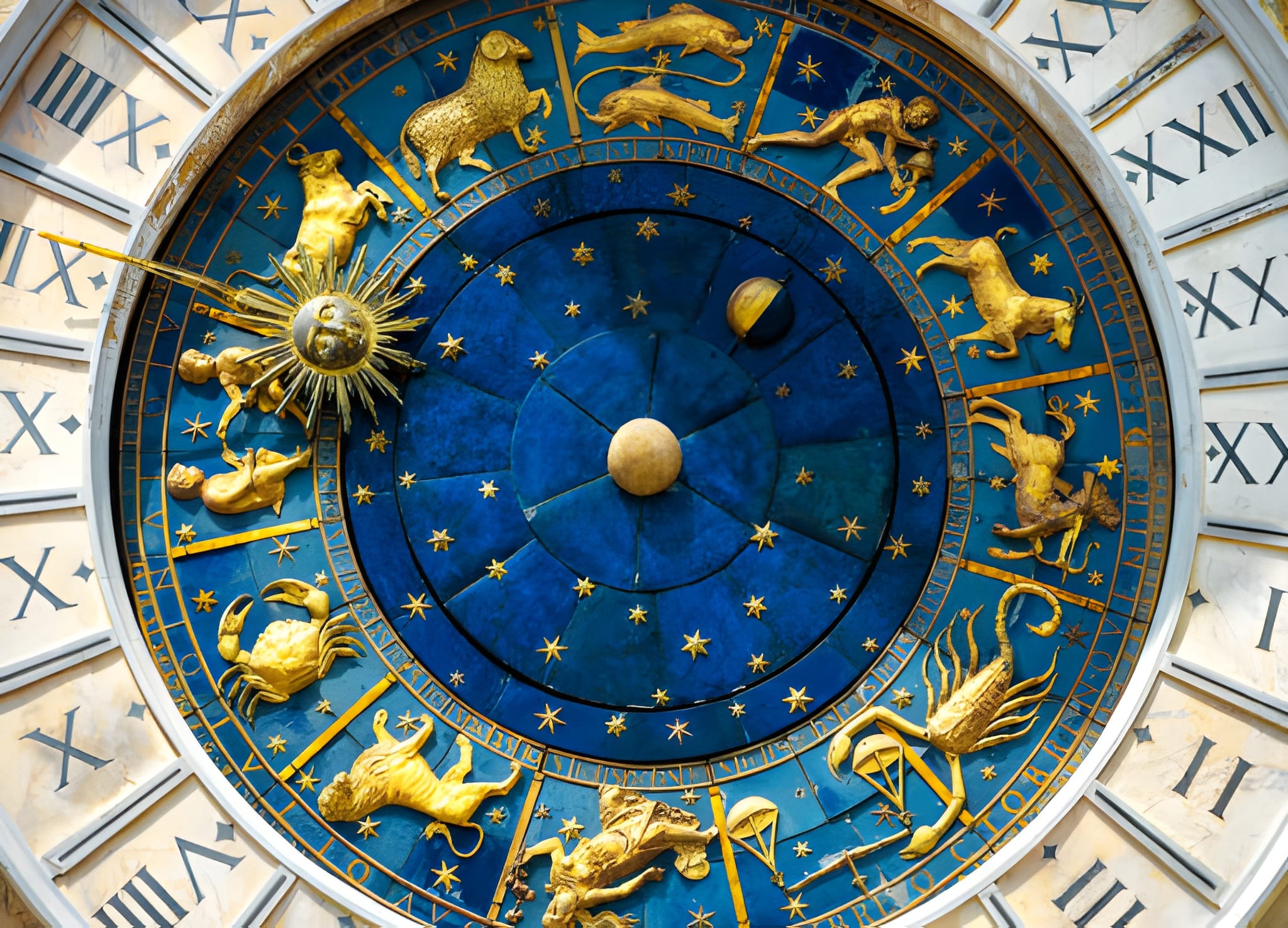Vimshottari Dasha in Vedic astrology is not a theory. It is the nervous system of prediction. You can read a chart perfectly — the planets, the houses, the yogas — but without Dasha you cannot tell when those promises mature. Dasha is the clock. It is how karma chooses its moment.
In Jyotish, a Dasha is a planetary period. Each Dasha hands control of your life to one planet at a time. That planet becomes the narrator of your reality for a defined stretch of years. This is why two people born with similar charts can live out their potentials at completely different ages. Time does not treat everyone equally. It follows the Dasha sequence.
This first part introduces how Vimshottari Dasha in Vedic astrology is calculated, how it is read, and why it is considered non-negotiable for accurate predictive work.
What Is Vimshottari Dasha?
The word “Dasha” means “period.” Each Dasha is an era of life governed by one planet. There are many Dasha systems in Jyotish — sign-based, Nakshatra-based, conditional — and software like JHora can calculate dozens for you. But Vimshottari is the backbone. It is the standard timing system used in predictive astrology.
Vimshottari is a 120-year cycle. That 120 years is divided among the nine grahas (Sun, Moon, Mars, Mercury, Jupiter, Venus, Saturn, Rahu, Ketu). The order is fixed. The length of each Mahadasha is fixed. This system comes from classical Parashara tradition and is considered universally applicable except in rare edge cases where the Moon cannot act as a reliable witness (severe mental impairment at birth, extremely short lifespans, etc.).
Why the Moon? Because in Jyotish the Moon is not mood — the Moon is perception. Life is not only what happens, it is how it is experienced. The Moon’s exact position at birth — its Nakshatra and its degree within that Nakshatra — decides which planetary Mahadasha you start with, and how much of that Mahadasha remains at birth.
Western astrology tends to glorify the Sun. Vedic astrology times reality through the Moon. This is not poetic. It is technical.
The 120-Year Cycle
The full Vimshottari cycle distributes fixed year-lengths to each planet:
- Ketu – 7 years
- Venus – 20 years
- Sun – 6 years
- Moon – 10 years
- Mars – 7 years
- Rahu – 18 years
- Jupiter – 16 years
- Saturn – 19 years
- Mercury – 17 years
The sequence continues in that exact order, looping through the 120-year design. At birth you “enter the movie” mid-scene. You do not always start with Ketu. You begin wherever the Moon’s Nakshatra places you, and you inherit the remaining balance of that planet’s Mahadasha.
Example: if the Moon sits in a Nakshatra ruled by Venus and it has already crossed one quarter of that Nakshatra at birth, then three quarters of Venus Mahadasha remain. Venus rules 20 years total, so you would start life with roughly 15 years of Venus Mahadasha still to run — and that means Venus is your first narrator.
After Venus finishes, the cycle moves to the Sun for 6 years, then Moon for 10, then Mars for 7, and so on, following the fixed order. This is the timeline architecture behind how Vimshottari Dasha works.
How Mahadasha and Antardasha Work
The large period is called the Mahadasha (MD) — the main planetary era. Inside it, you have subdivisions called the Antardasha (AD) and then even finer slices called Pratyantar Dasha (PD).
Think of it like this:
- Mahadasha (MD): who is running the era.
- Antardasha (AD): who is shaping this chapter within the era.
- Pratyantar Dasha (PD): who is pulling the actual trigger on events.
The math is fractal. Every Mahadasha contains all nine planets again as Antardashas, in proportion to their share of the 120-year cycle. So in Moon Mahadasha, you will experience Moon/Moon, then Moon/Mars, then Moon/Rahu, Moon/Jupiter, etc. In Saturn Mahadasha, you will go through Saturn/Saturn, Saturn/Mercury, Saturn/Ketu, and so on.
Software like JHora calculates this for you instantly. But knowing the logic matters, because this is predictive astrology in practice:
- The Mahadasha lord sets the dominant frequency of that era. It’s the backdrop. Health, career tone, relationship climate, internal narrative.
- The Antardasha lord sharpens focus. It decides what area becomes urgent right now inside that era.
- The Pratyantar Dasha lord acts like the matchstick. It times the concrete event — the move, the marriage, the loss, the breakthrough, the diagnosis, the award.
This is why mahadasha and antardasha are not “theory.” They are how timing actually feels in lived experience.
How to Interpret a Dasha Period
Reading vimshottari dasha in Vedic astrology is not just “X planet gives Y result.” You have to read the planet as an actor inside a setting. When you interpret a Mahadasha or Antardasha, check all of the following, every time:
- House ownership: Which houses does the Dasha lord rule? Those areas of life will light up. If Jupiter rules the 2nd and 5th, expect finances, self-worth, children/creativity, legacy themes.
- House placement: Where does that planet actually sit in the birth chart? A 7th-house Saturn during Saturn Mahadasha will test relationship contracts, public alliances, reputation, marriage dynamics, and visible obligations.
- Dignity and strength: Is the planet exalted, in own sign, moolatrikona, supported in Navamsa (D9), strong in Shadbala? Or is it fallen, combust, starved by malefics? A weak Mahadasha lord can still cause events — but often through stress, loss, correction, and humbling.
- Aspects and conjunctions: Who is touching it? Planets that conjunct, oppose, or tightly trine the Mahadasha lord become co-authors. If Rahu tightly aspects Venus and Venus is running Mahadasha, Rahu themes (obsession, rupture, foreignness, scandal, velocity) will bleed into Venus themes (love, agreements, aesthetics, money).
- MD ↔ AD relationship: Check the distance between the Mahadasha lord and the Antardasha lord. Are they 5/9 from each other (supportive)? 6/8 (friction, surgery, rupture)? 2/12 (drain)? 1/7 (open confrontation)? Their geometric relationship colors how the sub-period feels inside the main period.
- Functional nature: Is the Dasha lord a functional benefic or functional malefic for this Ascendant? A functional malefic running Mahadasha can act like a slow grinder. A functional benefic can act like grace, even if it arrives through work.
Prediction is not guesswork. It’s the synthesis of these factors, plus transits, plus observed life history. You do not “intuit” a timeline. You map it.
“Dasha Proposes, Transit Disposes”
Classical teaching, repeated by every serious astrologer: “Dasha proposes, Transit disposes.”
Translation: the Dasha indicates what is now karmically scheduled. The transit tells you when it actually lands in physical reality.
Example. Suppose Venus rules your 4th house (home, property, emotional grounding). During Venus Mahadasha / Moon Antardasha, you might see relocation potential on paper — home change, property purchase, shifting domestic security. But you still wait. Then Saturn, in transit, aspects your 4th house lord and the Moon at the same time. Suddenly you move. That is how timing locks.
Dashas set the promise. Transits pull the trigger. This is why predictive astrology timing is never just “check the transit of Jupiter and make a wish.” Without the active Dasha support, transit alone is noise.
Important Notes
Does the Sun Mahadasha activate the Moon if the Sun is placed in Cancer?
Yes. Planets act through their dispositors. If the Sun sits in Cancer, it answers to the Moon. So during Sun Mahadasha, the Moon’s condition also becomes active: its house, dignity, aspects. This is why we say Sun “borrows” the Moon’s condition. If the Moon is unstable, Sun Mahadasha inherits that instability. If the Moon is dignified and supported, Sun Mahadasha stabilizes and nourishes identity, authority, and father-related themes.
What does “Dasha proposes, Transit disposes” actually mean?
It means Dashas show which planets and houses are now karmically open. Transits are the delivery mechanism. A house can be promised in Dasha, but it will not manifest with physical clarity until the relevant transit pressures that point. Likewise, a transit alone cannot create what the Dasha has not licensed.
During Jupiter Mahadasha, what activates?
Jupiter Mahadasha turns up everything Jupiter touches: the houses it owns, the house it sits in, the planets it conjuncts, and the planets it aspects. Jupiter’s natural significations — wisdom, ethics, children, expansion, teachers, belief systems — become foreground. If Jupiter is strong, this often becomes a growth era. If Jupiter is weak or compromised, the same years may challenge faith, test morality, or force humility around advice, teaching, and judgment.
What is Dasha Chidra?
Dasha Chidra is the transition zone between two Mahadashas. It’s the bleed-over where one planet is slowly handing off control to the next. Usually felt in the final stretch (roughly the last year or so) of a Mahadasha. If the outgoing MD lord and incoming MD lord are enemies or are placed 6/8 from each other, this can feel turbulent, unstable, or disorienting. If they are harmonious, the shift feels like easing into a new room. Both planets are active in this liminal phase. Neither is fully in charge.
How should we interpret an Antar Dasha lord that’s strong from the Ascendant but weak from the Mahadasha lord?
Read from Lagna first. Physical reality outranks stylistic tension. If the Antar Dasha lord is strong from Lagna, the period still produces real, visible outcomes. Weakness relative to the Mahadasha lord shows friction inside that storyline — contradictions, stress, compromises — but it doesn’t erase the tangible gain or loss. Lagna is body. Body wins.
Should Vimshottari have priority over Jaimini systems?
For most readings, yes. Vimshottari Dasha in Vedic astrology is considered universal and is tied to the Moon, which reflects lived experience. Jaimini and other Rashi Dashas are powerful but more specialized and require more technical rigor. Use Vimshottari as your foundation. Layer others later for nuance.
Are planets that aspect the Mahadasha lord also active?
Yes. An aspect is a kind of energetic co-signature. If Mars aspects the Mahadasha lord closely, Mars themes — drive, conflict, assertion, competition, survival — will bleed into that Mahadasha. The Mahadasha lord never acts alone; it drags its relationships into the room.
FAQ on Vimshottari Dasha in Vedic Astrology
Can a planet deliver its promise only during its own Mahadasha?
Not always. A planet’s results can manifest during the Dasha of a planet it conjuncts, aspects, or disposits. If Saturn sits with Venus, Venus Mahadasha can trigger Saturn themes. The “loudest” planet in that cluster — strongest by dignity, by Shadbala, by position — tends to dominate delivery.
Is Dasha Chidra always negative?
No. Dasha Chidra is transitional, not cursed. It becomes difficult when the outgoing and incoming lords are hostile or geometrically misaligned (for example, placed 6/8). When they are friends or supportive, the shift can feel like preparation instead of collapse. It’s turbulence only when the handover is contested.
Should we analyze Dashas from Lagna, Moon, or Arudha Lagna?
All three. Lagna shows what physically, materially happens. The Moon shows how it feels internally and emotionally. Arudha Lagna shows what the world believes is happening to you — public narrative, reputation, projection. The cleanest material prediction usually comes from Lagna. The emotional truth comes from the Moon. Both matter.
Do progressed positions (Tajika-style progressions) change Vimshottari results?
Progressions belong to other systems and are not part of classical Parashari Vimshottari work. They can be explored as research, but for reliability, focus on natal chart + Vimshottari Dasha + transits. Do not dilute clarity with imported techniques until you have mastery of the core system.
Do Raja Yogas always manifest in the Dasha of the planets that form them?
They tend to manifest most strongly in those Dashas, or in the Dashas of planets that conjunct or tightly aspect those yoga lords. But if the yoga lords are mutual enemies, the result is rarely clean. You may get rise-with-loss, success-with-cost. Power arrives, but innocence doesn’t survive it. This is why even “good yogas” must be read with dignity and relationship context, not blindly praised.
Which year-length should we use when calculating Dashas?
Use the mean sidereal solar year (~365.25 days). Do not substitute lunar ritual years for Vimshottari timing. The predictive engine assumes the sidereal solar frame.
Ask your timing. Decode your Dasha at Much Needed Astro.



